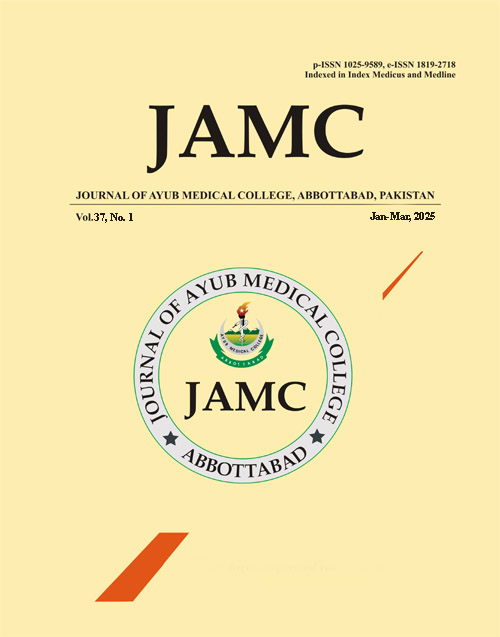WILL ARTIFICIAL INTELLIGENCE REPLACE DOCTORS AND TEACHERS BY 2035? EVIDENCE-BASED ANALYSIS FROM MEDICINE AND EDUCATION
DOI:
https://doi.org/10.55519/JAMC-01-14598Keywords:
Interprofessional Relations Decision Making, Computer-Assisted Technology, Medical Humanism, Artificial Intelligence Health Occupations Teaching Education, Professional Automation Ethics, MedicalAbstract
Predictions that artificial intelligence will replace doctors and teachers within the next decade have gained significant attention, yet a critical review of the scientific and policy literature from 2019 to 2024 reveals a more nuanced reality. Recent advances in AI have transformed diagnostic, predictive, and administrative functions in both medicine and education, often surpassing human performance in narrowly defined, data-rich tasks. However, core professional competencies—such as ethical judgment, empathy, contextual understanding, and the ability to foster human relationships—remain beyond the reach of current AI technologies. Ongoing challenges include the explainability of AI models, data privacy, legal accountability, and alignment with human values. Policy frameworks from leading organizations consistently recommend human-AI collaboration rather than replacement. The evidence indicates that while AI will continue to automate routine functions and reshape aspects of both professions, the essential roles of doctors and teachers are unlikely to be displaced in the foreseeable future. Instead, the future of medicine and education depends on responsible integration, robust oversight, and a focus on preserving the uniquely human elements of care and learning.
References
1. Topol EJ. High-performance medicine: the convergence of human and artificial intelligence. Nat Med. 2019;25(1):44-56.
2. Esteva A, Robicquet A, Ramsundar B, Kuleshov V, DePristo M, Chou K, et al. A guide to deep learning in healthcare. Nat Med. 2019;25(1):24-9.
3. He J, Baxter SL, Xu J, Xu J, Zhou X, Zhang K. The practical implementation of artificial intelligence technologies in medicine. Nat Med. 2019;25(1):30-6.
4. Davenport T, Kalakota R. The potential for artificial intelli-gence in healthcare. Future Healthc J. 2019;6(2):94-8.
5. Rajpurkar P, Chen E, Banerjee O, Topol EJ. AI in health and medicine. Nat Med. 2022;28(1):31-8.
6. Krittanawong C, Johnson KW, Rosenson RS, Wang Z, Aydar M, Kitai T. Deep learning for cardiovascular medicine: a practical primer. Eur Heart J. 2019;40(25):2058-73.
7. Amann J, Blasimme A, Vayena E, Frey D, Madai VI. Explain-ability for artificial intelligence in healthcare: a multidisci-plinary perspective. BMC Med Inform Decis Mak. 2020;20(1):310.
8. Price WN 2nd, Cohen IG. Privacy in the age of medical big data. Nat Med. 2019;25(1):37-43.
9. Gerke S, Minssen T, Cohen G. Ethical and legal challenges of artificial intelligence-driven healthcare. Artif Intell Healthc. 2020;1:295-336.
10. World Health Organization. Ethics and governance of artifi-cial intelligence for health: WHO guidance. Geneva: World Health Organization; 2021.
11. Holmes W, Bialik M, Fadel C. Artificial intelligence in edu-cation: Promises and implications for teaching and learning. Boston: Center for Curriculum Redesign; 2019.
12. UNESCO. Artificial Intelligence and Education: Guidance for policy-makers. Paris: UNESCO; 2021.
13. Williamson B, Eynon R. Historical threads, missing links, and future directions in AI in education. Learning, Media and Technology. 2020;45(3):223-7.
14. Zawacki-Richter O, Marín VI, Bond M, Gouverneur F. Sys-tematic review of research on artificial intelligence applica-tions in higher education – where are the educators? Int J Educ Technol High Educ. 2019;16(1):39.
15. OECD. Artificial Intelligence in Society. Paris: OECD Pub-lishing; 2019.
Downloads
Published
How to Cite
Issue
Section
License
Copyright (c) 2025 Munir Ahmad Abbasi

This work is licensed under a Creative Commons Attribution-NoDerivatives 4.0 International License.
Journal of Ayub Medical College, Abbottabad is an OPEN ACCESS JOURNAL which means that all content is FREELY available without charge to all users whether registered with the journal or not. The work published by J Ayub Med Coll Abbottabad is licensed and distributed under the creative commons License CC BY ND Attribution-NoDerivs. Material printed in this journal is OPEN to access, and are FREE for use in academic and research work with proper citation. J Ayub Med Coll Abbottabad accepts only original material for publication with the understanding that except for abstracts, no part of the data has been published or will be submitted for publication elsewhere before appearing in J Ayub Med Coll Abbottabad. The Editorial Board of J Ayub Med Coll Abbottabad makes every effort to ensure the accuracy and authenticity of material printed in J Ayub Med Coll Abbottabad. However, conclusions and statements expressed are views of the authors and do not reflect the opinion/policy of J Ayub Med Coll Abbottabad or the Editorial Board.
USERS are allowed to read, download, copy, distribute, print, search, or link to the full texts of the articles, or use them for any other lawful purpose, without asking prior permission from the publisher or the author. This is in accordance with the BOAI definition of open access.
AUTHORS retain the rights of free downloading/unlimited e-print of full text and sharing/disseminating the article without any restriction, by any means including twitter, scholarly collaboration networks such as ResearchGate, Academia.eu, and social media sites such as Twitter, LinkedIn, Google Scholar and any other professional or academic networking site.










